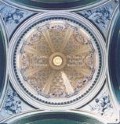Abstract
Over the last quarter-century, David Stephenson has produced a remarkable body of work: one that is rigorously conceived, richly varied, critically informed, inventive, and poetic. This work is composed of a series of discrete and systematic investigations of a single large subject: the idea of the sublime.
Preview
Unable to display preview. Download preview PDF.
References
For a concise overview of this rich subject, see, for example, Paul Guyer, “The Origins of Modern Aesthetics: 1711–35,” in Peter Kivy, ed., The Blackwell Guide to Aesthetics (Oxford: Blackwell Publishing, 2004), 15–44.
Ibid., 33.
Edmund Burke, A Philosophical Inquiry into the Origin of our Ideas of the Sublime and Beautiful (1757), cited in Charles Harrison, et al., Art in Theory 1648–1815: An Anthology of Changing Ideas (Oxford: Blackwell, 2001), 520.
Immanuel Kant, Critique of Practical Reason (1788); cited in Guyer, ed., The Cambridge Companion to Kant (Cambridge: Cambridge University Press, 1992), 1.
The exhibition was organized by the Montreal Museum of Fine Arts. See Jean Clair, ed., Cosmos: From Romanticism to the Avant-garde (Munich: Prestel/Montreal Museum of Fine Arts, 1999).
The title of this body of work pays clear homage to Asher B. Durand’s famous painting of the same name, from 1849.
For example, as the scholar Wilbur Knorr has written: “To the ancient Greeks we owe the notion of mathematics as a form of theoretical knowledge.... In this conception, the project of geometry is not the manipulation of figures in physical constructions but the understanding of their properties in pure thought.” From “Mathematics,” in Jacques Brunschwig and Geoffrey E. R. Lloyd, eds., The Greek Pursuit of Knowledge (Cambridge, Mass.: Belknap Press, 2003), 235. It is interesting to note that two of the most remarkable works in the history of philosophy—Spinoza’s Ethics and Wittgenstein’s Tractatus Logico-Philosophicus—are strongly indebted to the form of the geometrical theorem or proof.
Rights and permissions
Copyright information
© 2005 Princeton Architectural Press
About this chapter
Cite this chapter
Davis, K.F. (2005). Admiration and Awe. In: Visions of Heaven. Princeton Archit.Press. https://doi.org/10.1007/1-56898-645-9_1
Download citation
DOI: https://doi.org/10.1007/1-56898-645-9_1
Publisher Name: Princeton Archit.Press
Print ISBN: 978-1-56898-549-7
Online ISBN: 978-1-56898-645-6
eBook Packages: Architecture and DesignEngineering (R0)

